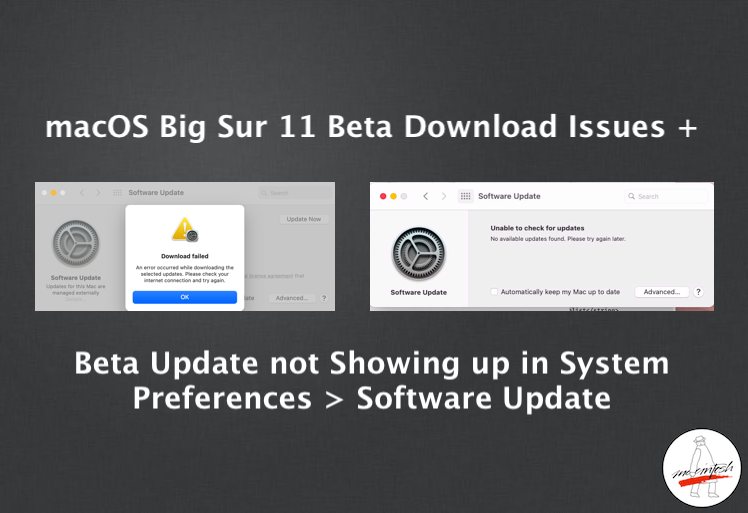Apple has introduced a security mechanism since macOS 10.14 (Mojave), which requires special access to be granted to remote control applications like TeamViewer. If you use macOS 10.14 or higher version, it is neccessary to enable the accessibility permissions for TeamViewer, otherwise the TeamViewer will not be installed, or any TeamViewer users connecting to macOS 10.14 or higher version will not get the ability to see or control anything on this mac.
This article guides on how to enable the access permissions for TeamViewer on macOS 10.14 (Mojave) or higher versions. In case you have not yet installed TeamViewer on your Mac, please click HERE.
Install TeamViewer
During the installation process you may be prompted with the following dialog:
To get rid of this, you can:
1. Click the Apple symbol in your OS X menu bar and open System Preferences.
2. Choose Security & Privacy.
3. From the Security & Privacy panel open the General tab and select Accessibility, next click the Lock icon to input the system password:
4. Choose to allow apps downloaded from App Store and identified developers.
5. Restart the installation for TeamViewer.
How to Grant Access Permission
When launching TeamViewer for the first time on the Mac running MacOS 10.14 (Mojave) or higher version, you might be prompted with a Review System Access page.
You can also re-open this page by clicking Help =>Check System Access after loading TeamViewer.
By default, all permissions are set to Denied. To ensure a proper remote session, Screen Recording and Accessibility permission are required at minimum. You can follow the steps below to get the permission:
1. Click Request Access for Screen Recording and Accessibility.
2. You will be prompted the system Privacy page. Click the small + button as showing in the screen shot below. Next select TeamViewer, and click Open to add it to the list.
3. Check if TeamViewer is in the panel, if yes, put a check next to it to enable it.
Note: If the system does not allow you to do that, please click the Lock icon to make the changes available.
The yellow triangle icon in the upper-left area of the TeamViewer window is shown until you have allowed the system access for TeamViewer:
How to Do if You Cannot Get the Review System Access Page?
If you are using an older version of TeamViewer, or you previously clicked the Deny button on that page, you might not be able to get the Review System Access page when you launch TeamViewer. When this happens, you can grant the access from the steps below:
1. Go to System Preferences => Security & Privacy => Privacy
2. You will get the same page as explained above to add TeamViewer for Screen Recording and Accessibility permission. Please Navigate to Screen Recording and Accessibility and follow the steps above to add TeamViewer into the Allow list for each of them.
After all are properly done, you can restart the TeamViewer, and give our tech support your TeamViewer ID and password to start the remote assistance.
If you still have any questions after reviewing this page, please feel free to contact us at support@easeus.com.
- System Preferences Download
- Download System Preferences For Mac Os X
- Mac Os System Preferences
- Macbook Pro System Preferences
Mac’s System Preferences menu is your go-to for any and all changes or tweaks you want to make to your Mac. Becoming familiar with it, especially for new Mac users, is critical to getting everything you can out of your Mac purchase. Once you are familiar with the System Preferences, the next thing is to understand how the system folders work.
System Preferences is a handy utility for Macs. Not only does it allow you to make changes to some default system settings, but it also allows you to configure fun features like Siri and fix some of the most common Mac error codes.
In case you didn’t know, System Preferences can be accessed in many ways, so you will never run out of options. While some of these methods allow you to open the entirety of the utility, others only let you access a specific setting. Anyway, as long as you know them, you should save a lot of time here and there.

Before you learn some ways to access System Preferences, make sure you know how to properly use and customize System Preferences.
- Choose Apple menu System Preferences, or click the System Preferences icon in the Dock. Then click the type of preference you want to set. To learn more, see Customize your Mac with System Preferences in the macOS User Guide. In System Preferences, click Software Update to see if your Mac is running the latest version of macOS.
- Customize your iMac. Choose Apple menu System Preferences, or click the System Preferences icon in the Dock. Then click the type of preference you want to set. To learn more, see Customize your Mac with System Preferences in the macOS User Guide. In System Preferences, click Software Update to see if your Mac is running the.
Using System Preferences
Assuming you want to do a DIY Mac repair for a minor error or you simply want to customize your Mac’s appearance, the first utility you’ll want to open is System Preferences.
Pro Tip: Scan your Mac for performance issues, junk files, harmful apps, and security threats
that can cause system issues or slow performance.

Special offer. About Outbyte, uninstall instructions, EULA, Privacy Policy.
When System Preferences is launched, you will notice rows of icons with corresponding names. Click on one icon to access a specific setting.
Now, if you open System Preferences but no icons are showing on your screen, do not panic. Instead, click the button that contains 12 dots. Doing this should reveal all settings and icons under System Preferences.
Alternatively, you can go directly to a specific System Preferences setting. To do this, click and hold on the icon of System Preferences in the Dock. A contextual menu should now open. Select from the list of settings available.
System Preferences Download
Customizing System Preferences
Yes, you can customize System Preferences. What’s more fun is that there are two types of customization you can do. The first one is with the panes that you have downloaded and installed, and the second one is with the panes that are visible and already available.
By default, macOS will provide you with approximately 30 visible panes. This number may vary depending on the hardware you are using. For instance, if your computer does not have an optical drive, there will be fewer panes because those for CDs and DVDs will not be available.
As for third-party panes, you have the option to remove them by using their respective uninstallers (if available) or by pressing CTRL + Right-Click and then choosing Remove.
Regardless of whether your panes are third-party or already available, know that you can reorder them using the View menu. You have the option to sort them by alphabetical order or by category.
Accessing System Preferences on Your Mac
Download System Preferences For Mac Os X

Looking to learn ways to access System Preferences on a Mac? You can easily make quick changes to any of its settings without actually opening the System Preferences app. Read on to discover how you can just change your settings with a single click from the Dock.
How to Access OS X System Preferences Using the Dock
There are a lot of Mac tips from real pros and ‘not-so-savvy’ figures floating around the net. You have to be careful to avoid picking out everything, including harmful ‘advice.’ One easy tip on how to manage your access to the System Preferences app on a Mac was shared by Dave Marra, a renowned Apple guru trusted by prominent Apple users, and will leave you feeling like a professional. It’s quite a handy tip that works for all Mac versions, from the OS X 10.7 Lion to the newest one.
To access your system settings, follow these steps:
- Launch your Dock.
- Move the cursor to the System Preferences icon, then click and hold.
- A pop-up menu with all available System Preferences settings will appear. From the list, choose the preference that you need, and it will open on your Mac.
Mac Os System Preferences
Check the list at the bottom to find out how to unhide your Dock if it’s gone from the normal position.
How to Use Spotlight Search to Access OS X System Preferences
The Dock tip is alright as it gets the work done. But you can achieve the same result using Spotlight. This is another tip not known to many Mac users. It’s straightforward and more practical as it increases the many ways you can use Spotlight. If you don’t want to use the trackpad or mouse, you can use the keyboard instead. Here is how:
- On your keyboard, hold down Command.
- To open Spotlight, press the Space bar once.
- In Spotlight, type in the name of the system preference you need to open.
- Once the name pops up, Spotlight takes over and does the rest of the job!
You can also easily get the list by simply right-clicking on the icon. One swift move.
Macbook Pro System Preferences
How to Open System Preferences If Your Dock Is Hidden
If your Dock is configured as ‘hidden,’ don’t worry as it can be easily made visible. Move the mouse cursor over the edge of the screen until you locate your Dock. Alternatively, the Dock can be ‘unhidden’ by using the pre-defined and built-in keyboard shortcut ‘⌥⌘D’, which is easy to locate because naturally, it stands out.
How to Access System Preferences from the Apple Menu

Try exploring your home screen. Click the Apple menu in the upper-left section of your screen, and the System Preferences shortcut appears right below the About This Mac section. Fascinating, right?
Well, if you already have System Preferences in the Dock, this may be an extra click. However, if your Dock is filled with lots of shortcuts and icons, this option allows you to conveniently access the System Preferences utility.
How to Open System Preferences Using the Search Pane
Do you want to access a specific setting in System Preferences but forgot where it is located?
Don’t worry because you can conveniently access it by using the search bar in the upper-right corner of the screen. Input a search term, and a list of suggestions will appear on your screen with their designated locations highlighted in white.
In Summary
As you can see, there are many ways to access System Preferences on your Mac. You can access it using Spotlight or using hidden shortcut keys in the Apple menu.
Now, you probably are excited to make changes to your Mac’s settings using System Preferences. But before you even do anything, it is recommended to install a trusted Mac tool that cleans and optimizes it for optimal performance. You’ll need it to ensure you avoid frustrating Mac error codes and lags during your customization journey.
If you know other ways to access System Preferences on a Mac, please share them with us. Comment your thoughts and ideas down below.